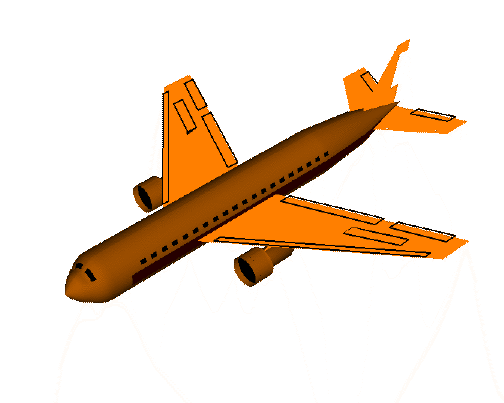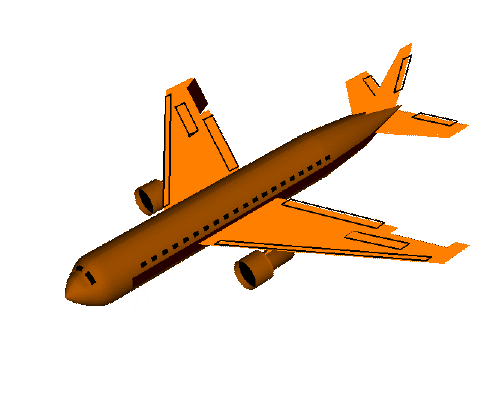THE LATERAL AXIS :
The vertical or normal axis passes vertically through the center of gravity. Movement of the airplane around the vertical axis is yaw and is controlled by movement of the rudder. Pressure applied to the left rudder pedal, for example deflects the rudder to the left into the airflow. The pressure of the airflow against the rudder pushes the tail to the right. The nose of the airplane yaws to the left.

THE VERTICAL OR NORMAL AXIS :
The vertical or normal axis passes vertically through the center of gravity. Movement of the airplane around the vertical axis is yaw and is controlled by movement of the rudder. Pressure applied to the left rudder pedal, for example deflects the rudder to the left into the airflow. The pressure of the airflow against the rudder pushes the tail to the right. The nose of the airplane yaws to the left.
There is a distinct relationship betweenmovement around the vertical and longitudinal axes of an airplane (i.e. yaw and roll). When rudder is applied to effect a yaw, for example, to the right, the left wing (on the outside of the turn) moves faster than the inside wing, meets the relative airflow at a greater angle of attack and at greater speed and produces more lift.. The use of rudder, therefore, along with aileron can help to raise the wing and produce a better coordinated turn.

In a roll, the airplane has a tendency to yaw away from the intended direction of the turn. This tendency is the result of aileron drag and is called adverse yaw. The upgoing wing, as well as gaining more lift from the increased camber of the downgoing aileron, also experiences more induced drag. The airplane, as a result, skids outward on the turn. Use of rudder in the turn corrects this tendency.
Do you like this post? Please link back to this article by copying one of the codes below.
URL: HTML link code: BB (forum) link code:











0 comments:
Post a Comment